Providing Indoor Radio Coverage In Schools For First Responders
Download Case Study PDF: Providing Indoor Radio Coverage in Schools for First Responders
Schools should be a safe place. Everyone agrees that children should spend their school days in a safe learning environment. Parents, teachers, and school personnel don’t want to worry about school safety.
Unfortunately, violent trends across the U.S. are making people worry. Shootings in schools – once almost unthinkable – are on a tragic upswing. In the 2020-2021 school year, 93 school shooting incidents involving injuries or deaths were reported, the most in the 21 years since the government started keeping that grim statistic¹.
School administrators, their community partners, and experts in the field are responding with safety and response plans embracing the cross-functional responsibility of school safety. Multiple school departments, local first responders, and other outside agencies, teams, and experts all contribute knowledge and expertise throughout the planning and implementation process to enhance school safety in the face of potential and unknown threats.
The outcome can involve steps to make sure that first responders’ two-way radio communications work inside and outside all of a school system’s sturdily constructed facilities.
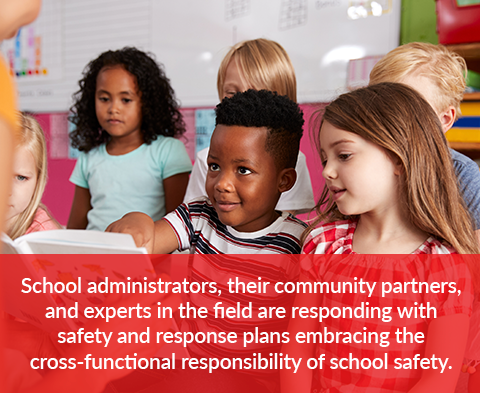
In southwest Florida, Lee County school officials turned to the firm Industrial Communications and Electronics, Inc., a Westell-certified integrator, to assess radio frequency (RF) throughout the school system’s campuses.
Florida’s Lee County Schools – The Plan
In 2019, Lee County School District began to implement a new comprehensive safety plan. It detailed a range of investments – physical barriers to entry, improved camera monitoring, limiting door access, and identification measures. Assurance was also needed that their emergency communication tools were effective and in sync with local law enforcement and emergency response teams.
During emergencies, landline and cellular telephone networks can easily become inundated with calls, hampering communication². Accordingly, emergency responders rely upon two-way radio communications to coordinate their collaborative response. Ensuring the ability to directly contact emergency responders outside of the school from within the school during any type of emergency and communicate valuable information with can greatly improve the success of the school safety response strategy.
Radios on a private network can accommodate time-sensitive communication during these times of peak telephone network congestion². The enhancement of Lee County Schools’ emergency communication tools included the installation of an in-building emergency responder radio system, also referred to as an Emergency Responder Communication Enhancement System (ERCES). This can be a crucial part of the overall safety plan for any school campus areas previously lacking signal coverage.
The Problem: Poor RF Signals Thwart Communications
Why is poor RF signal a problem in schools?
Building materials are the leading cause of poor RF signals indoors. Electromagnetic signals often will not propagate effectively through concrete, brick, masonry block, and other materials used in schools, which are often sturdily built to serve a community for generations. Those solid, thick walls and floors block electromagnetic signals, including emergency responder radio transmissions, cell phone connections, and Wi-Fi³. Wireless communications (radio contact) with someone inside become difficult or impossible, particularly if they are in central areas behind/beneath multiple walls or floors. The RF signals need a boost.
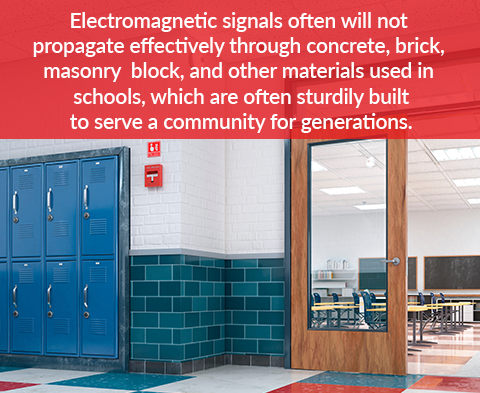
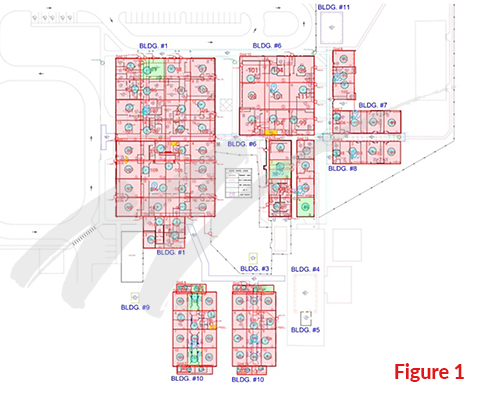
The Solution, Part 1: RF Signal Assessment
Lee County school officials contracted Westell-certified integrator Industrial Communications to perform a radio frequency assessment. Such assessments identify and locate problem areas with poor or non-existent indoor RF signal. Industrial Communications used specialized RF equipment that measures the signal strength for the radio channels emergency response teams use.
The RF assessment report for one of Lee County’s school buildings (see figure 1) showed that almost the entire building had unacceptable RF signals (red squares) and needed to be enhanced. While a very small area had acceptable coverage (green squares).
The Solution, Part 2: RF Signal Correction
After such RF assessments were completed at all Lee County district schools, the next step was to design and implement an ERCES system to extend RF signal coverage at each site. Industrial Communications developed an RF design utilizing tools to predict how the signal levels would be enhanced by installing an antenna system. The RF design also included a bill of materials for budgeting purposes. Part of one such design appears in Figure 2.
Once each RF design was complete and the district approved the bill of materials for installation, Industrial Communications engaged their qualified system installers to implement each ERCES system in a timely manner. Qualified installers possess the knowledge, experience, and nuanced skills to achieve a successful installation that works. Others lacking those qualifications might leave a trail of incorrect connector installations, damaged coax cables, and poor antennas mountings – impacting the system’s performance.
The last step in the process was a final RF assessment to confirm the antennas provide the correct radio signal levels to match the RF design. Figure 3 shows how the orange no-signal areas shown earlier are now green with good signals.
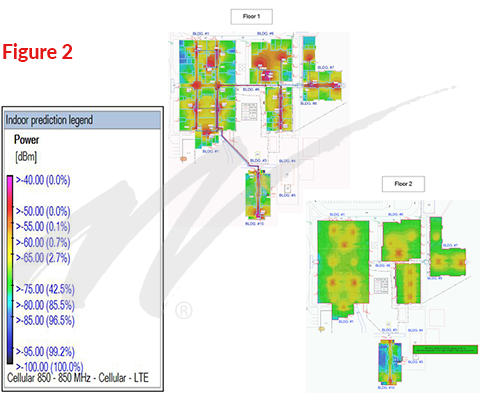
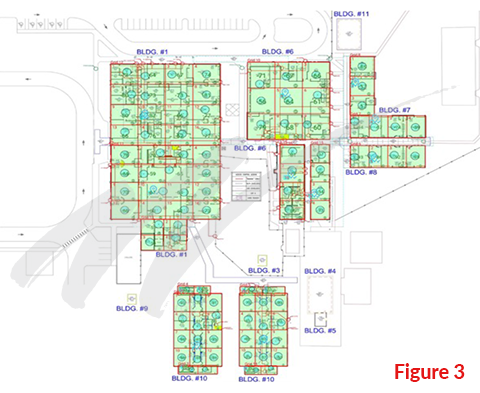
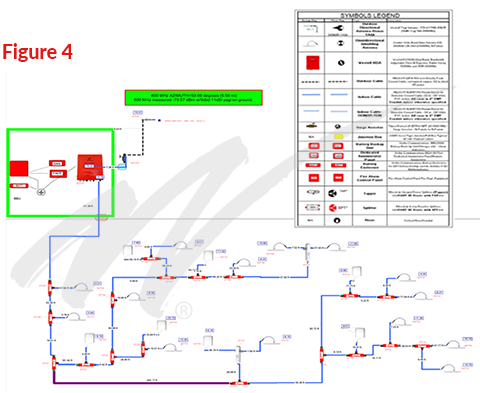
What’s In An ERCES?
The ERCES solution consists of a BDA (bi-directional amplifier) connected to a network of antennas distributed throughout the building via 1/2” coaxial cable. The antennas are connected with splitters and couplers to adjust the power output at each antenna location, ensuring that the entire school maintains consistent radio coverage in case of any emergency.
Figures 4 and 5 shows a diagram of a wall-mounted Westell Public Safety BDA and its connections to the network of local service antennas, a rooftop-mounted donor antenna, and an annunciator panel showing the status of the DAS.
Figure 6 is a photograph of a Westell Public Safety BDA installed in a school with a battery backup system (at bottom) and a filter unit.
ERCES systems are typically placed in a low visibility, non-public areas. Westell’s line of public safety BDAs contain built-in alarming features. Notifications of any issues that may alter the effectiveness of optimal RF coverage connect to a smaller, publicly placed, monitored fire panel, included as part of a comprehensive approach to an esthetic, safer system with continued peace of mind. Annual system check-ups with the system installer are recommended.
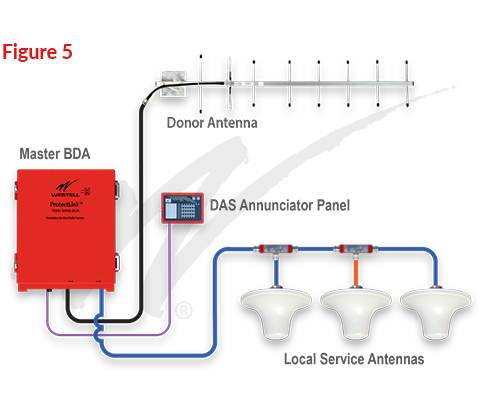
The Outcome:
Communications Barriers Overcome
The students, teachers, other school personnel, and parents probably won’t see, hear, or notice anything different after an ERCES system is installed. But police officers, firefighters, and others using public safety radios will.
Where their radios previously emitted a special “no signal” tone inside schools – a sound many first responders say they dread – they will now be able to reach their fellow responders and dispatchers. If an unthinkable incident ever occurs, they will be able to respond more effectively.
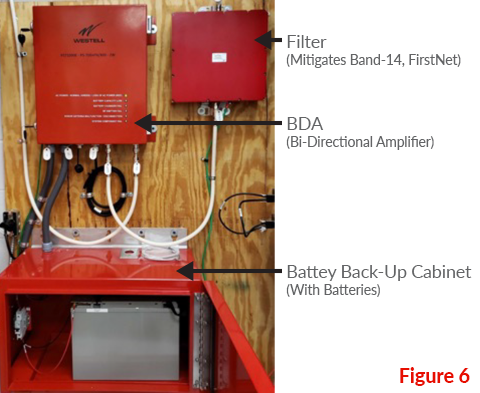
References / Sources:
1. Irwin, V; Wang, K; Cui, J; and Thompson, A., (2022) ‘Report on Indicators of School Crime and Safety: 2021’, National Center for Education and Statistics, pp. 2. Available at: https://nces.ed.gov/pubsearch/pubsinfo.asp?pubid=2022092
2. Johns Hopkins University Applied Physics Laboratory, (2016) ‘A Comprehensive Report on School Safety Technology’, U.S. Department of Justice, pp. 170. Available at: https://www.ojp.gov/pdffiles1/nij/grants/250274.pdf
3. Stone, W. (1997) ‘Electromagnetic Signal Attenuation in Construction Materials’, The National Institute of Standards and Technology, Available at: https://doi.org/10.6028/NIST.IR.6055
Related Resources
School Safety Resources:
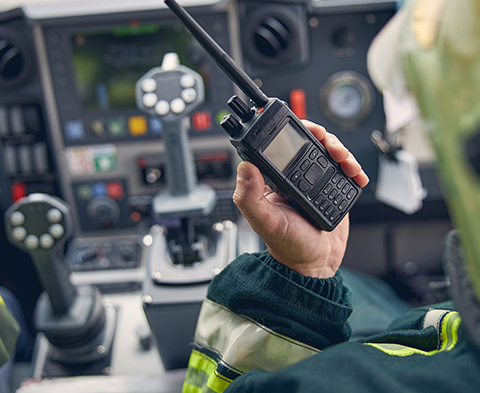
A collection of information and reports on K-12 school and campus safety from the leading subject matter experts in their fields.
Case Study:
Providing Indoor Radio Coverage in Schools for First Responders
Download Guide:
School Safety 2-Way Radio Communication Guide
Download 12 Steps to ERCES:
12 Steps to ERCES, Process Guide
Need Funding?

Access resources for available grants and funding initiatives to assist in creating a safer schools safety plan for your school.
Ready to Get Started?


